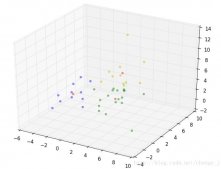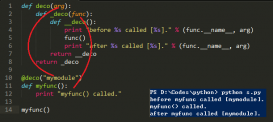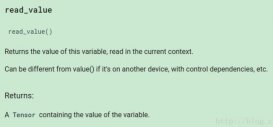我就废话不多说了,大家还是直接看代码吧~
|
1
2
3
4
5
6
7
8
9
10
11
12
13
14
15
16
17
18
19
20
21
22
23
24
25
26
27
28
29
30
31
32
33
34
35
36
37
38
39
40
41
42
43
44
45
46
47
48
49
50
51
52
53
54
55
56
57
58
59
60
61
62
63
64
65
66
67
68
69
70
71
72
73
74
75
76
77
78
79
80
81
82
83
|
'''Created on 2018-4-16'''def compile(self,optimizer, #优化器loss, #损失函数,可以为已经定义好的loss函数名称,也可以为自己写的loss函数metrics=None, #sample_weight_mode=None, #如果你需要按时间步为样本赋权(2D权矩阵),将该值设为“temporal”。默认为“None”,代表按样本赋权(1D权),和fit中sample_weight在赋值样本权重中配合使用weighted_metrics=None, target_tensors=None,**kwargs #这里的设定的参数可以和后端交互。)一般使用model.compile(loss='categorical_crossentropy',optimizer='sgd',metrics=['accuracy'])# keras所有定义好的损失函数loss:# keras\losses.py# 有些loss函数可以使用简称:# mse = MSE = mean_squared_error# mae = MAE = mean_absolute_error# mape = MAPE = mean_absolute_percentage_error# msle = MSLE = mean_squared_logarithmic_error# kld = KLD = kullback_leibler_divergence# cosine = cosine_proximity# 使用到的数学方法:# mean:求均值# sum:求和# square:平方# abs:绝对值# clip:[裁剪替换](https://blog.csdn.net/qq1483661204/article/details)# epsilon:1e-7# log:以e为底# maximum(x,y):x与 y逐位比较取其大者# reduce_sum(x,axis):沿着某个维度求和# l2_normalize:l2正则化# softplus:softplus函数# # import cntk as C# 1.mean_squared_error:# return K.mean(K.square(y_pred - y_true), axis=-1) # 2.mean_absolute_error:# return K.mean(K.abs(y_pred - y_true), axis=-1)# 3.mean_absolute_percentage_error:# diff = K.abs((y_true - y_pred) / K.clip(K.abs(y_true),K.epsilon(),None))# return 100. * K.mean(diff, axis=-1)# 4.mean_squared_logarithmic_error:# first_log = K.log(K.clip(y_pred, K.epsilon(), None) + 1.)# second_log = K.log(K.clip(y_true, K.epsilon(), None) + 1.)# return K.mean(K.square(first_log - second_log), axis=-1)# 5.squared_hinge:# return K.mean(K.square(K.maximum(1. - y_true * y_pred, 0.)), axis=-1)# 6.hinge(SVM损失函数):# return K.mean(K.maximum(1. - y_true * y_pred, 0.), axis=-1)# 7.categorical_hinge:# pos = K.sum(y_true * y_pred, axis=-1)# neg = K.max((1. - y_true) * y_pred, axis=-1)# return K.maximum(0., neg - pos + 1.)# 8.logcosh:# def _logcosh(x):# return x + K.softplus(-2. * x) - K.log(2.)# return K.mean(_logcosh(y_pred - y_true), axis=-1)# 9.categorical_crossentropy:# output /= C.reduce_sum(output, axis=-1)# output = C.clip(output, epsilon(), 1.0 - epsilon())# return -sum(target * C.log(output), axis=-1)# 10.sparse_categorical_crossentropy:# target = C.one_hot(target, output.shape[-1])# target = C.reshape(target, output.shape)# return categorical_crossentropy(target, output, from_logits)# 11.binary_crossentropy:# return K.mean(K.binary_crossentropy(y_true, y_pred), axis=-1)# 12.kullback_leibler_divergence:# y_true = K.clip(y_true, K.epsilon(), 1)# y_pred = K.clip(y_pred, K.epsilon(), 1)# return K.sum(y_true * K.log(y_true / y_pred), axis=-1)# 13.poisson:# return K.mean(y_pred - y_true * K.log(y_pred + K.epsilon()), axis=-1)# 14.cosine_proximity:# y_true = K.l2_normalize(y_true, axis=-1)# y_pred = K.l2_normalize(y_pred, axis=-1)# return -K.sum(y_true * y_pred, axis=-1) |
补充知识:一文总结Keras的loss函数和metrics函数
Loss函数
定义:
keras.losses.mean_squared_error(y_true, y_pred)
用法很简单,就是计算均方误差平均值,例如
|
1
2
3
4
5
|
loss_fn = keras.losses.mean_squared_errora1 = tf.constant([1,1,1,1])a2 = tf.constant([2,2,2,2])loss_fn(a1,a2)<tf.Tensor: id=718367, shape=(), dtype=int32, numpy=1> |
Metrics函数
Metrics函数也用于计算误差,但是功能比Loss函数要复杂。
定义
|
1
2
3
|
tf.keras.metrics.Mean( name='mean', dtype=None) |
这个定义过于简单,举例说明
|
1
2
3
4
|
mean_loss([1, 3, 5, 7])mean_loss([1, 3, 5, 7])mean_loss([1, 1, 1, 1])mean_loss([2,2]) |
输出结果
<tf.Tensor: id=718929, shape=(), dtype=float32, numpy=2.857143>
这个结果等价于
np.mean([1, 3, 5, 7, 1, 3, 5, 7, 1, 1, 1, 1, 2, 2])
这是因为Metrics函数是状态函数,在神经网络训练过程中会持续不断地更新状态,是有记忆的。因为Metrics函数还带有下面几个Methods
|
1
2
3
4
5
6
7
8
9
10
11
12
|
reset_states()Resets all of the metric state variables.This function is called between epochs/steps, when a metric is evaluated during training.result()Computes and returns the metric value tensor.Result computation is an idempotent operation that simply calculates the metric value using the state variablesupdate_state( values, sample_weight=None)Accumulates statistics for computing the reduction metric. |
另外注意,Loss函数和Metrics函数的调用形式,
loss_fn = keras.losses.mean_squared_error mean_loss = keras.metrics.Mean()
mean_loss(1)等价于keras.metrics.Mean()(1),而不是keras.metrics.Mean(1),这个从keras.metrics.Mean函数的定义可以看出。
但是必须先令生成一个实例mean_loss=keras.metrics.Mean(),而不能直接使用keras.metrics.Mean()本身。
以上这篇Keras loss函数剖析就是小编分享给大家的全部内容了,希望能给大家一个参考,也希望大家多多支持服务器之家。
原文链接:https://blog.csdn.net/u011311291/article/details/79956195












